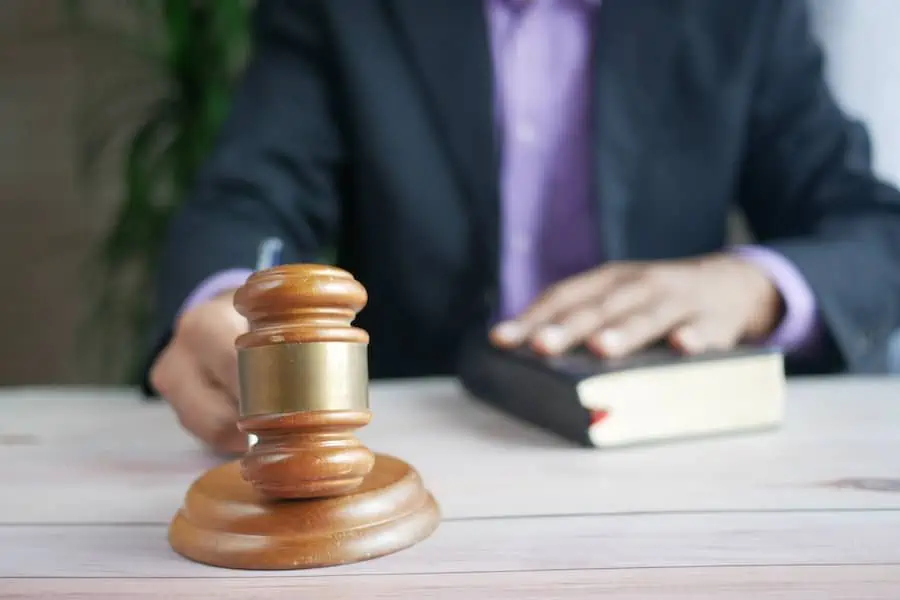
Nobody wants to be involved in a car accident and, by extension, the legal issues surrounding determining liability. However, suppose you’re ever in a car accident with a lawsuit heading to trial. In that case, it’s important to understand the legal process involved in filing such a lawsuit to ensure you receive the compensation you’re owed as a potential victim.
A quick look at the numbers provides a telling story. According to statistics from the Florida Department of Highway Safety and Motor Vehicles, the state records approximately 381,156 crashes annually, resulting in 242,622 injuries and 3,292 fatalities. With these staggering numbers, some cases inevitably proceed to trial. That’s where a North Port, FL car accident attorney can help you navigate the complex process of filing a lawsuit and seek fair compensation if you ever find yourself in a similar situation.
The Parties In A Car Accident Trial
Anyone with a stake in a lawsuit is called a “party.” The plaintiff is the party filing a complaint and seeking to prove car accident allegations. On the other hand, the defendant is the party opposing the plaintiff’s claim. In car accident lawsuits, the plaintiff must prove their credible claims based on the preponderance of the evidence. However, defendants may also have their counterclaims against the plaintiff.
In addition to the two parties and their witnesses, there will be a judge and, in some cases, a jury. It’s important to consult your attorney about the type of trial that will work better for your situation. In a nutshell, here is the process for filing a car accident lawsuit:
Jury Selection
Juries are chosen randomly, and both attorneys can ask questions and exclude specific jurors who may have conflicts of interest or be unfit to serve. The jury selection process involves the attorneys introducing a summary of the issues in the car accident case to the potential jury pool. The primary responsibility of the jury is to make findings of fact, and the judge ultimately makes decisions based on the law. Once the jury selection is completed, the trial commences.
The Trial Process
In most cases, the parties may present pre-trial motions to the judge to make the trial more efficient or exclude irrelevant evidence. At the beginning of the trial, the plaintiff and defendant have an opportunity to make opening statements. Either party can file a motion for the judge to deliver a summary judgment or dismiss the case altogether. However, these motions can only be granted if a party cannot legally prevail or when there are no contested facts for the jury to decide.
Opening Statements
Once the trial starts, the plaintiff will present their opening statement, laying out their theory regarding the defendant’s responsibility for the accident. The burden of proof is on the party filing the case, so the defendant may decide not to make any opening statements. They may try to disprove the plaintiff’s story instead of narrating a more convincing account.
Presentation Of Evidence
After opening statements, the plaintiff presents their evidence. Some of the evidence in a car accident case may include the following:
- Police reports
- Witnesses and testimony
- Medical records
- Medical experts
- Photographs, diagrams, videos, or other evidence supporting the plaintiff’s claims.
The defense can contest the admission of evidence. Once the plaintiff has finished questioning witnesses, the defendant can cross-examine them to challenge their testimony. Once all of the plaintiff’s evidence is presented, the defense will also present their witnesses and evidence. Likewise, the plaintiff can object to evidence and cross-examine the defendant’s witnesses during this trial phase.
Once the defense has presented its evidence, the judge and the parties will present their closing arguments to the jury. The plaintiff will give the first closing argument and have an opportunity to speak last after the defense presents its view. The judge will provide instructions to the jury concerning the questions at hand, and the jury will leave the courtroom to deliberate.
Judge Or Jury Decision
The jury will deliberate and decide which party was at fault and recommend the amount the plaintiff should be awarded for medical bills, pain and suffering, and loss of wages. The judge will be the fact-finder if the matter is heard without a jury (bench trial).
Once the jury has reached a verdict, they will present it to the judge, who rules on any pending legal questions and delivers the final judgment. The losing party will have a specified timeframe to appeal the matter before paying the judgment.
Consult A Skilled Attorney Before Going To Court!
Before filing a car accident lawsuit, make sure your injuries have been taken care of. The next step is to consult an experienced personal injury attorney to help you explore your legal options and determine the best course of action that saves you both money and time. Since the trial process is time-consuming and subject to time limits (statutes of limitations), working with a legal expert can help protect your interests and legal rights. Moreover, a skilled attorney can analyze your unique case to help you better understand your options and potential pitfalls and possibilities.

















![Fan Expo Chicago [Convention], Donald E. Stephens Convention Center, 16 Aug What You Need to Know](https://www.thefreemanonline.org/wp-content/uploads/2024/09/Fan-Expo-Chicago-Convention-Donald-E.-Stephens-Convention-Center-16-Aug-What-You-Need-to-Know-74x55.jpg)
![Error [err_http_headers_sent] Cannot Set Headers After They Are Sent to the Client How to Fix](https://www.thefreemanonline.org/wp-content/uploads/2024/09/Error-err_http_headers_sent-Cannot-Set-Headers-After-They-Are-Sent-to-the-Client-How-to-Fix--74x55.jpg)

![RangeError Failed to Construct 'Response' Status Provided (0) is Outside the Range [200, 599]How to Fixing](https://www.thefreemanonline.org/wp-content/uploads/2024/09/RangeError-Failed-to-Construct-Response-Status-Provided-0-is-Outside-the-Range-200-599How-to-Fixing-74x55.jpg)